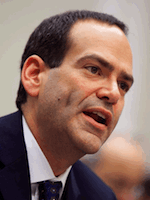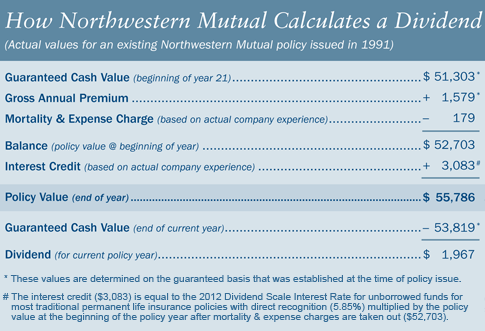Carriers filed 168 annuity product changes in the second quarter of 2012, making for an extremely active period. This compares to 59 new filings during the first quarter of 2012 and 162 in Q2 of last year. Overall, 24 carriers got into the act with some form of new release, significant change, or product pull back. [Click here for a printable pdf of this article, which contains Morningstar charts.]
Continued Pricing Adjustments
Carriers continue to re-adjust pricing to cope with difficult market conditions. Carriers are dealing with the reality that living benefits are costly to maintain, so activity is being sought elsewhere as the wait continues for interest rates to rise. Low-cost I-shares continue to spread out across the market. After the second quarter closed, several major carriers, including MetLife and Allianz, stopped sales of L-shares.
Low cost I-share development continues to expand. This quarter Symetra and Midland National released their versions, following the low-cost launches last quarter by Jackson National and Great West. These products, like Symetra’s True VA with 117 subaccounts and no living benefits, offer tax-deferred shells and cutting edge investment strategies. The AI Report now includes fifty-five I-share contracts versus 34 a year ago.
Sales Volumes and Asset Levels
Second quarter 2012 variable annuity new sales increased 5.5% over first quarter, to $37.7 billion from $35.8 billion, but were down 4.6% from the second quarter of 2011. At the midpoint of the year new sales of $73.5 billion are approximately 48% of 2011 full year new sales, indicating a strong possibility of a flat to slightly down year for VA sales absent a significant uptick in the second half. Assets were down 3.3% due to stagnant market performance, and net flow was up slightly at $4.0 billion vs. $3.8 billion in the first quarter. Net flow continues to be low relative to the 2nd half 2011 levels of $7 to $8 billion per quarter but remains in positive territory.
Q2 Product Changes
Allianz released Income Focus, a new Lifetime GMWB benefit. The annual withdrawal amount for a 65 year old (age at election) is 4.25% (3.75% joint). An additional 1% is added to the withdrawal percentage on the anniversary if the current account value is greater than the previous anniversary. Initial purchase payments are eligible for the 1% increase on the first benefit anniversary; subsequent payments are eligible on the second benefit anniversary. Subsequent payments are tracked separately. The rider fee is 1.30% for single and joint.
Allianz also released a Lifetime GMWB with a 4.5% withdrawal rate for a 65 year old, Income Protector, available in single and joint versions. Steps ups are many and unique. There is an 8% fixed annual step up. There is a highest quarterly anniversary value step up, and two other unique step ups: when the owner moves into the next age band, the withdrawal percentage and amount may step up if greater than current guaranteed amount; and after withdrawals start, the highest anniversary value step ups continue (calculated after full withdrawals are taken). The annual fee is 110 basis points.
Guardian has released Investor II VA, a new owner driven contract (B, L-shares). Benefits include four different flavors of Lifetime GMWB and the three common death benefits. The fee is 140 bps for the B-share.
Lincoln National released Lifetime Income Advantage 2.0—Protected Funds, a new Lifetime GMWB with a 4.5% guaranteed withdrawal for a 65 year old (joint life based on younger spouse’s age).
The benefit offers two step up methods, a 5% fixed or highest anniversary value step-up. A feature is included that increases the withdrawal percentage to 10% (for owners age 65 or older) to cover nursing home due to medical necessity provided the benefit has been in effect for five years. The fee is 105 bps (125 joint). (Lifetime Income Advantage 2.0) In addition, a version of the benefit is offered with 5% withdrawal rate for a 65 year old that requires investment allocations. Lincoln closed the earlier versions of these benefits.
Lincoln also updated its i4Life Advantage hybrid GMIB by dropping the minimum payout floor from 4.5% to 4.0%. The fee stays the same at 105 bps (125 bps joint) and the benefit converts to an immediate variable annuity after an access period. The lifetime income guarantee assures at least 75% of the account value as a benefit amount. A 4% lifetime income payment is available for a 65 year old.
Minnesota Life released a new version of its single and joint Lifetime GMWB, Ovation Lifetime Income II. It is similar to its current benefit and continues to offer a 5% lifetime withdrawal for a 65 year old. The fee for the new version increased 5 bps to 120 bps.
Nationwide released new B, L, and Bonus share versions of their Destinations 2.0 contract with an updated 7% Lifetime Income Option—Single and Joint. The benefit (95 bps single and 120 bps joint) offers a 5.25% withdrawal (4.5% joint) with a 7% simple step up for 10 years of no withdrawals. If the account value falls to zero after withdrawals have begun, a settlement option allows a lump sum payment of a portion of the remaining benefit base.
Penn Mutual released Smart Foundation, a new annuitant driven contract in B, L, and Bonus share versions. The fee is 140 bps for the B-share. Benefits include a GMAB; Lifetime GMWB and the standard return of premium and HAV death benefits.
Protective released B, C, and L-shares versions of Protective VA. The contract fee is 130 bps for the B-share. The Lifetime GMWB, SecurePay, offers a 5% withdrawal (4.5% for joint version) after age 59 1⁄2. There is a highest anniversary value step up. The benefit includes a medical emergency provision that increases the withdrawal percentage by 0.25% to 2.0% (after a two-year waiting period and up to age 75). There is also a nursing home provision that doubles the withdrawal percentage (capped at 10% withdrawals) if confined to a nursing home. The purchase option (10 bps) allows purchase of the benefit after time of application. Rider fee is 60 bps (single and joint). There is a second version of the Lifetime GMWB, SecurePay R72 that offers a 7.2% annual step up for 10 years or until the first withdrawal. The fee is 100 bps (single and joint).
Prudential closed its X-share bonus product to new sales in late June.
RiverSource released the 2012 version of RAVA 5, available in B, C, and L shares. Pricing ranges from 95 bps for the 10 year surrender charge “B” version to 145 bps for the C-share. The contract offers a lifetime withdrawal benefit, a GMAB and the three common death benefits, Return of Premium (ROP), Highest Anniversary Value (HAV) and an Earnings Enhancement Benefit (EEB).
RiverSource’s new Lifetime GMWB, SecureSource 3, has a 5% withdrawal for a 65 year old (4.75% for joint life version) and the fee is reduced 30 bps to 120 bps (130 bps for joint life). The benefit base compounds at 6% annually, plus there is a highest anniversary value step up. An interesting feature is the bump up to the withdrawal percentage of 0.5% each year (reduced from 1%) during the withdrawal period provided the account balance hasn’t dropped 20% or more below the benefit base. Investments must be allocated to proscribed funds. Beneficiaries may continue withdrawals until the benefit base is exhausted. Funds must be invested into one asset allocation model.
Symetra released True VA, a new I-share (60 bps) with no living benefits but standard and enhanced earnings death benefits. The contract lists 117 subaccounts offering passive, active and alter- native funds. The contract features a flexible annuitization option that can be funded from the subaccounts over time. In addition, there is an automatic sell strategy program designed to protect against market volatility.
SunAmerica released a new version of Polaris Platinum, featuring a fee drop from 152 bps to 130 bps. The contract carries a full suite of Lifetime GMWBs with specific allocation funds: Polaris III with Income Plus 6% Dynamic and Custom Portfolios; 8% Dynamic options; Single and Joint versions.
VALIC lowered the withdrawal percentage and raised the fees on IncomeLock Plus 6 and IncomeLock Plus 8, its Lifetime GMWBs. The fees increased from 110 bps to 130 bps (from 135 bps to 155 bps for joint). For IncomeLock Plus 6, withdrawals go from 6% to 5.5% (single life) and from 5.5% to 5% (joint life). For IncomeLock Plus 8, withdrawals go from 5.5% to 5.0% (single life) and from 5.0% to 4.5% (joint life). Withdrawals drop to 4% (all versions) once the account balance reaches zero. There is also a highest anniversary step up and a deferred bonus that doubles the benefit base after 12 years of no-withdrawals.
Pipeline
Allianz closed its Vision C and Connections L contracts. In addition they reduced the withdrawal percentage on their newly released Income Focus Lifetime GMWB benefit. As of July 23rd, the withdrawal percentage is 3.75% (3.25% joint life) for a 65 year old (down from 4.25% single and 3.75 joint). (Income Focus). The step up on a second version of their Lifetime GMWB, Income Protector, dropped from 7% to 5% in July.
Hartford reduced the withdrawal percentages on their Future5 Lifetime GMWB benefits from 5% to 4.5% (single and joint), and raised the fee on the Future6 single from 85 bps to 105 bps.
Jackson National announced that the M&E charge on its Perspective II contracts will increase by 0.05% in September.
Lincoln is releasing an add-on benefit to their i4Life Advantage called 4Later Advantage Protected Funds. This step-up benefit offers annual 5% fixed and highest anniversary value step-ups to the benefit base for an annual fee of 105 bps (versus 15% every three years in older versions). Account value must be invested in one of five allocation funds.
In August MetLife closed its GMIBs and Lifetime GMWBs to new premiums (GMIB Plus III, GMIB Plus IV, Lifetime Income Solution Plus). In addition, on its GMIB Max IV MetLife is decreasing the withdrawal percentage from 5.0% to 4.5% under the no lapse feature at or after age 62 and adding a 5.0% withdrawal for no lapse at or after age 67.
New York Life introduced Income Plus, a variable annuity with a standard GMIB and the optional Guaranteed Future Income Benefit. The owner elects an income start date then makes discretionary transfers from the account balance to purchase annuity payments. The 100 bp rider allows the purchaser to lock in a guaranteed income stream to be started in the future, which is also funded over time either automatically by the company or with discretion by the owner.
Available for new sales on August 1, Pacific Life released a new contract for the Schwab platform, Schwab Retirement Income, with a 60 bps contract fee and a Lifetime GMWB (80 bps single; 100 bps joint) at a 5% withdrawal guarantee and a selection of three fund of funds subaccounts.
Prudential stopped selling the Bonus version of Premier Retirement in July and will also launch a new version of its Lifetime GMWB, Highest Daily Lifetime Income 2.0, in August. It will differ from the currently sold version in that it will have reduced withdrawal rates; a higher fee; and different investment guidelines. The fee is increased from 95 bps to 100 bps (single life) or 110 (joint life). Minimum issue age is age 50 (up from 45). The Lifetime GMWB continues to offer a 5% withdrawal for a 65 year old, but a new age band from 591⁄2 to 64 years old offers 4.0%. Clients can invest among 19 pre-approved asset allocation models or designated funds.
RiverSource launched a new GMAB, Accumulation Protector, in July. It will allow the owner to invest in the Columbia Managed Volatility sub-account.
SunAmerica lowered the base rollup on the version of the Income Builder GLWB on its O-share contract from 6% to 5.25% effective June 25.
In July, VALIC announced its IncomeLOCK benefit was closed to new sales.
Marco Chmura, Kevin Loffredi, and Frank O’Connor contributed to this article.
© 2012 Morningstar, Inc.


 Barofsky (left), who now teaches at New York University, said that Treasury Secretary Tim Geithner and the other Goldman Sachs alumni who ran TARP treated him and Ms. Warren as though they were “stupid” because they didn’t have financial institution experience. The bankers also tried to turn Barofsky and Warren against each other, he said.
Barofsky (left), who now teaches at New York University, said that Treasury Secretary Tim Geithner and the other Goldman Sachs alumni who ran TARP treated him and Ms. Warren as though they were “stupid” because they didn’t have financial institution experience. The bankers also tried to turn Barofsky and Warren against each other, he said. Grice (right) quoted Keynes on inflation: “By continuing a process of inflation, governments can confiscate, secretly and unobserved, an important part of the wealth of their citizens. By this method they not only confiscate, but they confiscate arbitrarily; and, while the process impoverishes many, it actually enriches some.”
Grice (right) quoted Keynes on inflation: “By continuing a process of inflation, governments can confiscate, secretly and unobserved, an important part of the wealth of their citizens. By this method they not only confiscate, but they confiscate arbitrarily; and, while the process impoverishes many, it actually enriches some.” O’Shaughnessy’s three-part formula calls for investing on the basis of Quality (Companies with strong financials), Value (Underpriced companies); and Yield (Companies that pay a reliable dividend). Most investors, he noted, do the opposite. Even during the stock market’s worst 20-year period, from 1929-1949, stocks generated an average annual total return of 6%, he said.
O’Shaughnessy’s three-part formula calls for investing on the basis of Quality (Companies with strong financials), Value (Underpriced companies); and Yield (Companies that pay a reliable dividend). Most investors, he noted, do the opposite. Even during the stock market’s worst 20-year period, from 1929-1949, stocks generated an average annual total return of 6%, he said.  Indeed, the recession may not actually be over, opined Michael Belkin, a financial market strategist and author of the Belkin Report. Despite the healthy-looking stock market, he believes we’re slipping back into a recession. He advises investors to short the broad market, get out of technology and industrial materials, short Starbucks, and load up on consumer staples, health care, utilities and financials—in that order.
Indeed, the recession may not actually be over, opined Michael Belkin, a financial market strategist and author of the Belkin Report. Despite the healthy-looking stock market, he believes we’re slipping back into a recession. He advises investors to short the broad market, get out of technology and industrial materials, short Starbucks, and load up on consumer staples, health care, utilities and financials—in that order.

 The book’s authors—Noonan is managing director of capital markets at Russell Investments and Smith is a consultant and former Russell managing director—detail a methodology, linked to ideas published several years ago by their former colleague, Richard Fullmer, that applies the institutional framework for measuring pension liabilities to individuals.
The book’s authors—Noonan is managing director of capital markets at Russell Investments and Smith is a consultant and former Russell managing director—detail a methodology, linked to ideas published several years ago by their former colleague, Richard Fullmer, that applies the institutional framework for measuring pension liabilities to individuals.
 In a 50-year period, the number of U.S. households has more than doubled, rising from 53 million in 1960 to almost 117 million in 2010, a 120% increase. At the same time, the number of married couples with children actually slightly declined, from 23.9 million to 23.6 million — not a huge number change, but a notable change in direction for the married population.
In a 50-year period, the number of U.S. households has more than doubled, rising from 53 million in 1960 to almost 117 million in 2010, a 120% increase. At the same time, the number of married couples with children actually slightly declined, from 23.9 million to 23.6 million — not a huge number change, but a notable change in direction for the married population.


